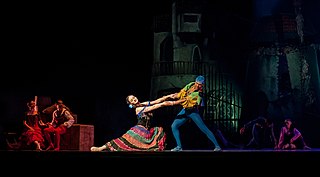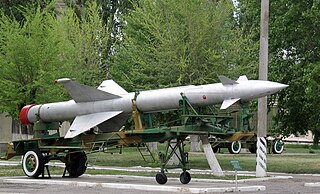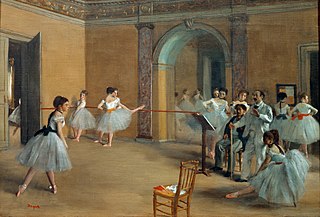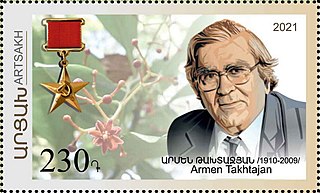
Carl Linnaeus, also known after ennoblement in 1761 as Carl von Linné, was a Swedish biologist and physician who formalised binomial nomenclature, the modern system of naming organisms. He is known as the "father of modern taxonomy". Many of his writings were in Latin; his name is rendered in Latin as Carolus Linnæus and, after his 1761 ennoblement, as Carolus a Linné.

Martial arts are codified systems and traditions of combat practiced for a number of reasons such as self-defence; military and law enforcement applications; competition; physical, mental, and spiritual development; entertainment; and the preservation of a nation's intangible cultural heritage.

Savate, also known as French Boxing or French Foot Fighting, is a French hybrid martial art and full-contact combat sport that combines principles of western boxing with a wide variety of kicking techniques. Unlike kickboxing styles such as Muay Thai, which allow knee and/or shin strikes in competitive bouts, savate involves striking exclusively with one's feet, but participants can nonetheless target any part of the body. The sport is also notable for requiring footwear to be worn by the competitors, as would be expected from individuals fighting in the streets. A male practitioner of savate is called a "tireur" while a female one is a "tireuse".

Arnis, also known as kali or eskrima/escrima, is the national martial art of the Philippines. These three terms are, sometimes, interchangeable in referring to traditional martial arts of the Philippines, which emphasize weapon-based fighting with sticks, knives, bladed weapons, and various improvised weapons, as well as "open hand" techniques without weapons.

A performance is an act or process of staging or presenting a play, concert, or other form of entertainment. It is also defined as the action or process of carrying out or accomplishing an action, task, or function.

The common redshank or simply redshank is a Eurasian wader in the large family Scolopacidae.

Johann Christian Fabricius was a Danish zoologist, specialising in "Insecta", which at that time included all arthropods: insects, arachnids, crustaceans and others. He was a student of Carl Linnaeus, and is considered one of the most important entomologists of the 18th century, having named nearly 10,000 species of animals, and established the basis for the modern insect classification.

The common reed bunting is a passerine bird in the bunting family Emberizidae, a group now separated by most modern authors from the finches, Fringillidae. The genus name Emberiza is from Old German Embritz, a bunting. The specific schoeniclus is from Ancient Greek skhoiniklos, a now unknown waterside bird.

The S-25 Berkut is a surface-to-air guided missile, the first operational SAM system in the Soviet Union. In the early 1950s it was tested at Kapustin Yar. It was deployed in several rings around Moscow starting in 1955 and became combat ready in June 1956. The system failed, however, to detect, track, and intercept the only overflight of the Soviet capital Moscow by a U-2 reconnaissance plane on July 5, 1956. It was used only defensively at Moscow; the more mobile S-75 would be used in almost all other locations. Several improvements were introduced over its long service lifetime, and the system was finally replaced by the S-300P in 1982.

Classical ballet is any of the traditional, formal styles of ballet that exclusively employ classical ballet technique. It is known for its aesthetics and rigorous technique, its flowing, precise movements, and its ethereal qualities.

Armen Leonovich Takhtajan or Takhtajian, was a Soviet-Armenian botanist, one of the most important figures in 20th century plant evolution and systematics and biogeography. His other interests included morphology of flowering plants, paleobotany, and the flora of the Caucasus. He was one of the most influential taxonomists of the latter twentieth century.

Sambo is a combat sport, and a recognized style of amateur wrestling governed by the UWW in the World Wrestling Championships along with Greco-Roman wrestling and freestyle wrestling. Practiced worldwide, sambo is a martial art with Soviet origins. Many of its moves have been incorporated in other forms of combat sport such as mixed martial arts.

Systema Naturae is one of the major works of the Swedish botanist, zoologist and physician Carl Linnaeus (1707–1778) and introduced the Linnaean taxonomy. Although the system, now known as binomial nomenclature, was partially developed by the Bauhin brothers, Gaspard and Johann, Linnaeus was the first to use it consistently throughout his book. The first edition was published in 1735. The full title of the 10th edition (1758), which was the most important one, was Systema naturæ per regna tria naturæ, secundum classes, ordines, genera, species, cum characteribus, differentiis, synonymis, locis, which appeared in English in 1806 with the title: "A General System of Nature, Through the Three Grand Kingdoms of Animals, Vegetables, and Minerals, Systematically Divided Into their Several Classes, Orders, Genera, Species, and Varieties, with their Habitations, Manners, Economy, Structure and Peculiarities".
Retuinskih System ROSS is a martial system trademarked by Alexander Retuinskih related to Systema. ROSS is its official name given by the All-Russian Federation of Russian Martial Arts (RFRMA). It is conceived more as a methodology of performance enhancement for combat, applicable to any martial art, rather than a closed system.

There are a number of martial arts styles and schools of Russian origin. Traditional Russian fist fighting has existed since the 1st millennium AD. It was outlawed in the Russian Empire in 1832. However, it has seen a resurgence after the break-up of the Soviet Union.

Combatives is the term used to describe the hand-to-hand combat systems primarily used by members of the military, law enforcement, or other groups such as security personnel or correctional officers. Combatives are based in martial arts but are not themselves distinct disciplines.
Hybrid martial arts, also known as hybrid fighting systems or sometimes eclectic martial arts or freestyle martial arts, referred to as mixed martial arts or fighting systems that incorporate techniques and theories from several martial arts. While numerous martial arts borrow or adapt from other arts and to some extent could be considered hybrids, a hybrid martial art emphasizes its disparate origins.
Soviet parallel cinema is a genre of film and underground cinematic movement that occurred in the Soviet Union in the 1970s onwards. The term parallel cinema was first associated with the samizdat films made out of the official Soviet state system. Films from the parallel movement are considered to be avant-garde, non-conventionalist and cinematographically subversive.
A serious game or applied game is a game designed for a primary purpose other than pure entertainment. The "serious" adjective is generally prepended to refer to video games used by industries like defense, education, scientific exploration, health care, emergency management, city planning, engineering, politics and art. Serious games are a subgenre of serious storytelling, where storytelling is applied "outside the context of entertainment, where the narration progresses as a sequence of patterns impressive in quality ... and is part of a thoughtful progress". The idea shares aspects with simulation generally, including flight simulation and medical simulation, but explicitly emphasizes the added pedagogical value of fun and competition.















